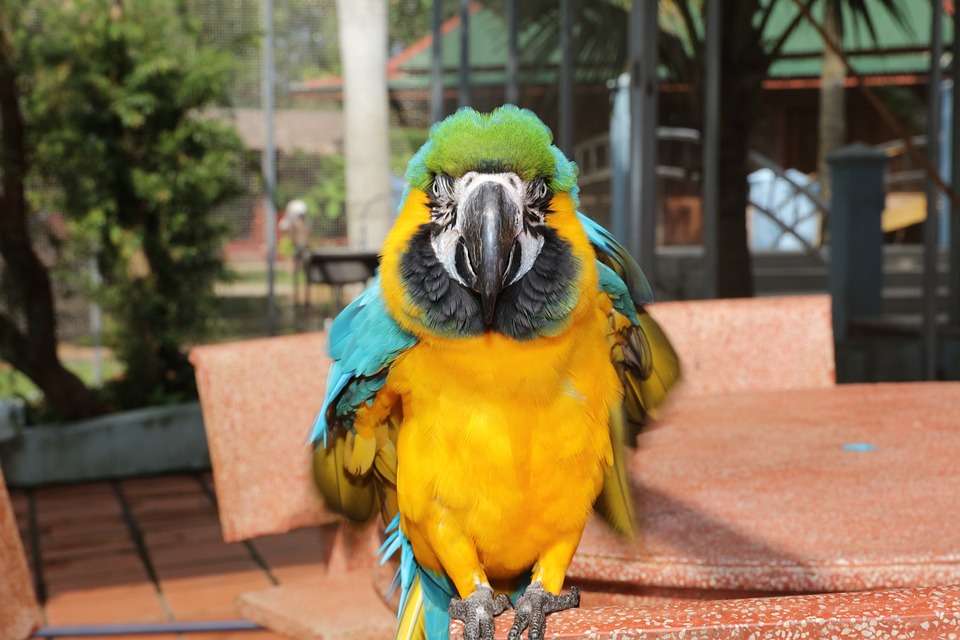Parrot training is an important aspect of owning a parrot as a pet. It not only ensures their mental stimulation and well-being but also helps establish a strong bond between you and your feathered friend. To make the most of your parrot training sessions, it is crucial to have a well-structured parrot training checklist that outlines specific training objectives. In this article, we will guide you on how to create an effective parrot training checklist to achieve your training goals successfully.
I. Understanding the Importance of a Parrot Training Checklist
Having a parrot training checklist offers several benefits that contribute to the overall success of your training sessions.
A. Enhancing Training Efficiency: A checklist helps you stay organized and focused during training, making your sessions more productive.
B. Setting Clear Goals and Objectives: By having specific training objectives in mind, you can work towards achieving them methodically.
C. Tracking Progress and Measuring Success: A checklist allows you to monitor your parrot’s progress and see how far they have come in their training journey.
II. Determining Your Parrot’s Training Needs
Before creating a checklist, it is important to assess your parrot’s current skills and abilities, as well as identify areas for improvement. This will help you prioritize your training objectives.
A. Assessing Your Parrot’s Skills and Abilities: Observe your parrot to determine what commands and behaviors they already know.
B. Identifying Areas for Improvement: Note any behavioral issues or specific skills that your parrot needs to work on.
C. Prioritizing Training Objectives: Determine which training objectives are most important and should be focused on first.
III. Establishing Specific Training Objectives
Now that you have identified your parrot’s training needs, you can establish specific training objectives to work towards.
A. Focus on Basic Commands and Behaviors: Start with foundational commands and behaviors that every parrot should know.
1. Step-up Command: Teach your parrot to step onto your hand or a perch when given the command.
2. Target Training: Train your parrot to touch a specific target, such as a stick or your finger.
3. Recall Training: Teach your parrot to come to you when called.
4. Desensitization to Handling: Help your parrot become comfortable with being handled, such as for vet visits or grooming.
5. Potty Training: Train your parrot to go to a designated area for elimination.
B. Addressing Behavioral Issues: If your parrot exhibits any behavioral issues, such as biting or screaming, include training objectives to address these problems.
1. Biting: Teach your parrot bite inhibition and redirect their biting behavior.
2. Screaming: Train your parrot to use quieter vocalizations or provide them with alternative ways to communicate.
3. Feather Plucking: Address the underlying causes of feather plucking and provide enrichment to reduce this behavior.
4. Excessive Chewing: Redirect your parrot’s chewing behavior towards appropriate toys and objects.
C. Enrichment and Mental Stimulation: Include training objectives that focus on providing mental stimulation for your parrot.
1. Puzzle Toys: Teach your parrot to solve puzzles and retrieve treats hidden within them.
2. Foraging Activities: Create opportunities for your parrot to forage for their food, mimicking their natural behavior in the wild.
3. Clicker Training: Use a clicker to mark desired behaviors and reinforce positive actions.
4. Trick Training: Teach your parrot fun tricks, such as waving or ringing a bell.
IV. Designing Your Parrot Training Checklist
Now that you have established your training objectives, it’s time to design your parrot training checklist.
A. Establishing Training Sessions: Determine the frequency and duration of your training sessions.
B. Breaking Down Behaviors into Achievable Steps: Divide each training objective into smaller steps to ensure gradual progress.
C. Setting Realistic Timeframes: Allow sufficient time for your parrot to learn and master each behavior.
D. Incorporating Positive Reinforcement Techniques: Use rewards, such as treats or praise, to reinforce desired behaviors.
E. Documenting Progress and Adjusting Goals: Keep track of your parrot’s progress and make adjustments to your training objectives as needed.
V. Frequently Asked Questions (FAQs)
Q1. How often should I train my parrot?
A: Training sessions should be conducted regularly, ideally a few times a week, to maintain consistency and reinforce learning.
Q2. Can parrots be trained at any age?
A: Yes, parrots can be trained at any age, although it may be easier to train younger parrots as they are more receptive to learning.
Q3. How long should each training session be?
A: Training sessions should be kept short, around 10-15 minutes, to maintain your parrot’s focus and prevent fatigue.
Q4. What are some common mistakes to avoid during parrot training?
A: Avoid using punishment or force, as this can damage the trust and bond between you and your parrot. Additionally, avoid overwhelming your parrot with too many training objectives at once.
Q5. What if my parrot refuses to cooperate during training?
A: Patience is key. If your parrot is not cooperating, take a step back and assess if there are any underlying issues causing their reluctance. Adjust your training approach accordingly to make it more enjoyable for your parrot.
Now that we have covered the essential headings and sub-headings for creating a parrot training checklist, you can use these as a framework to develop your own personalized checklist. Remember, consistency, patience, and positive reinforcement are key when it comes to successful parrot training. Happy training!









